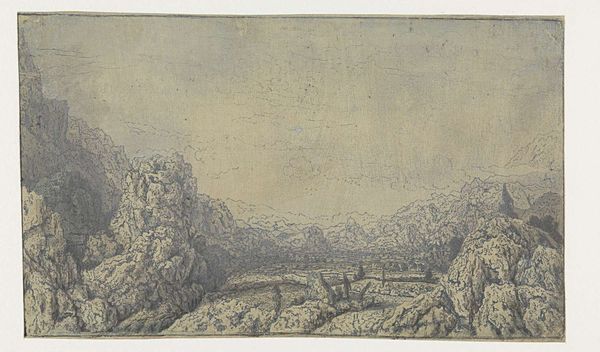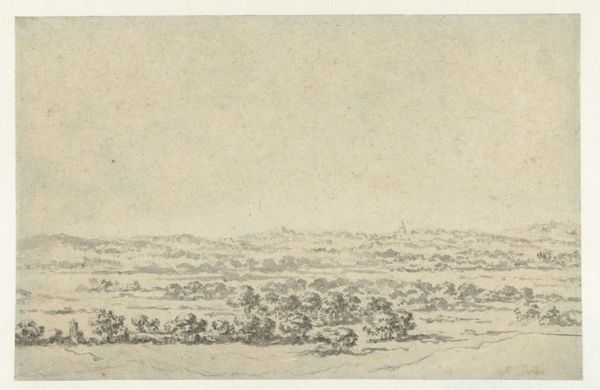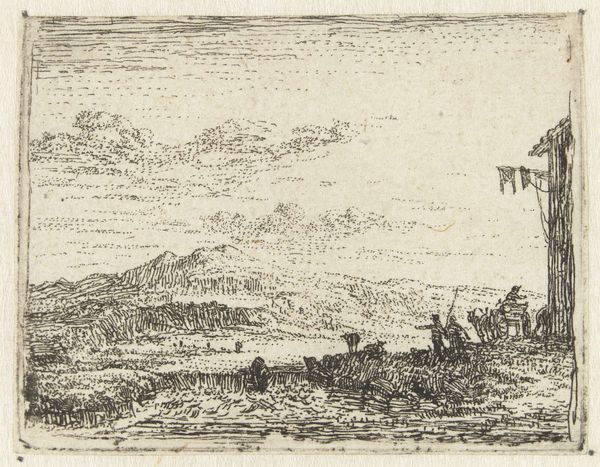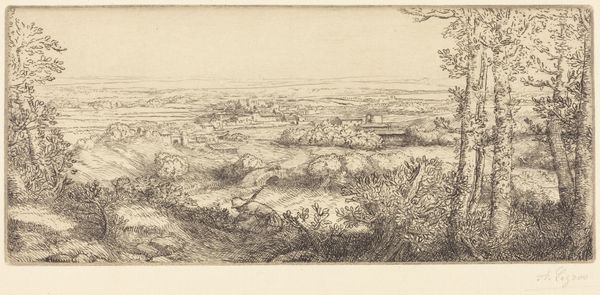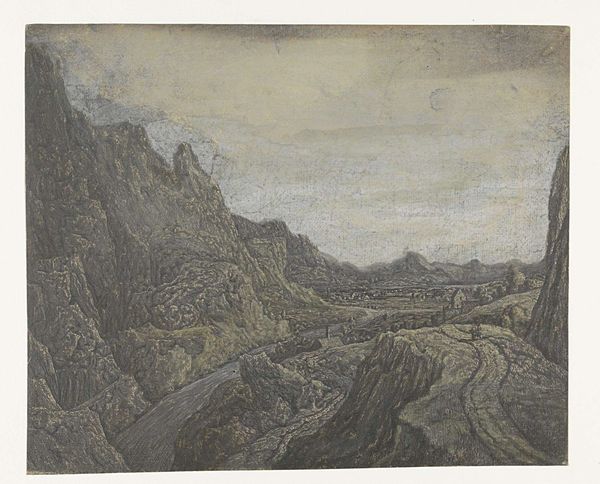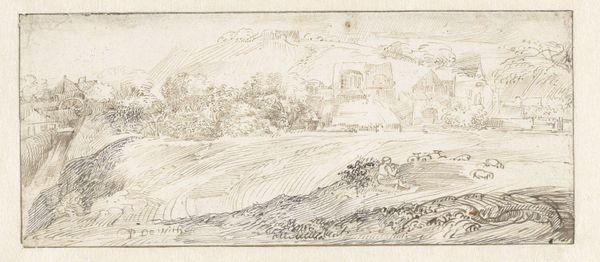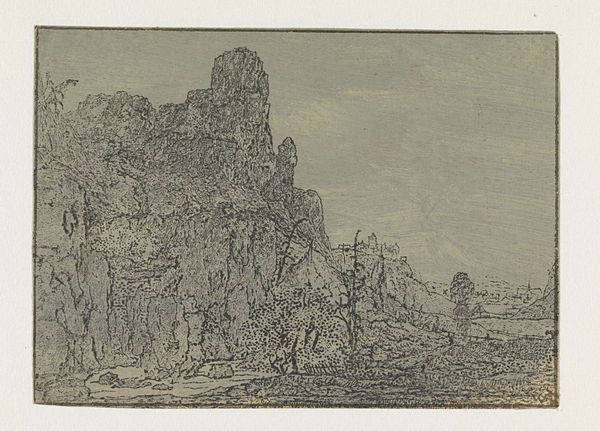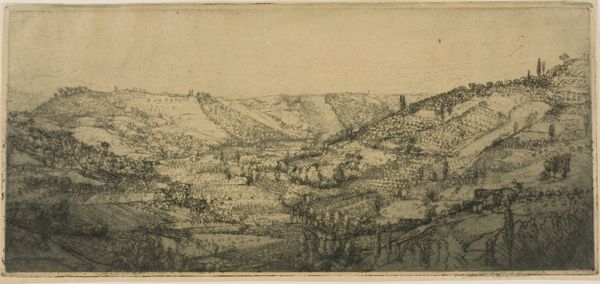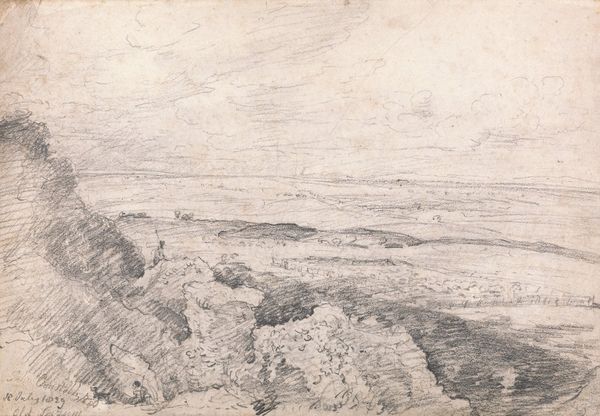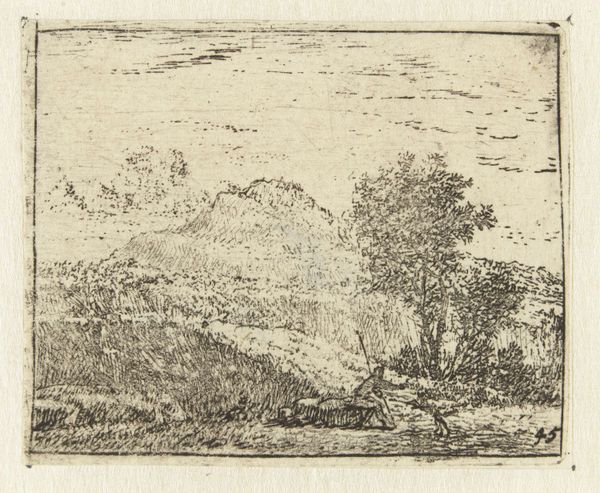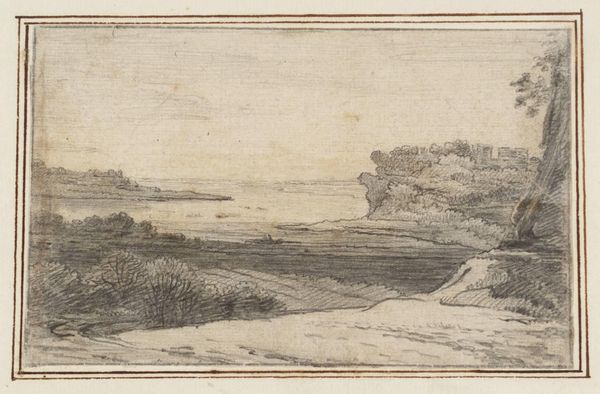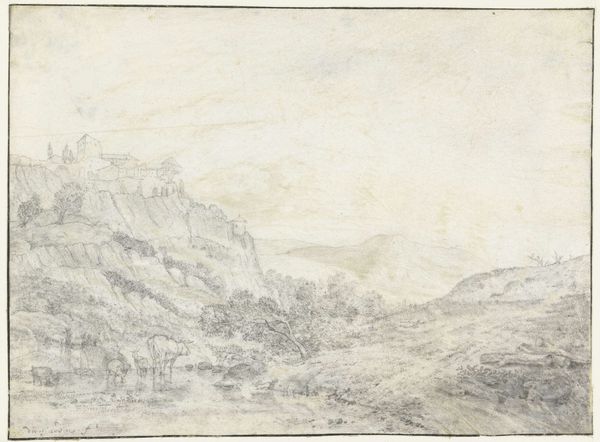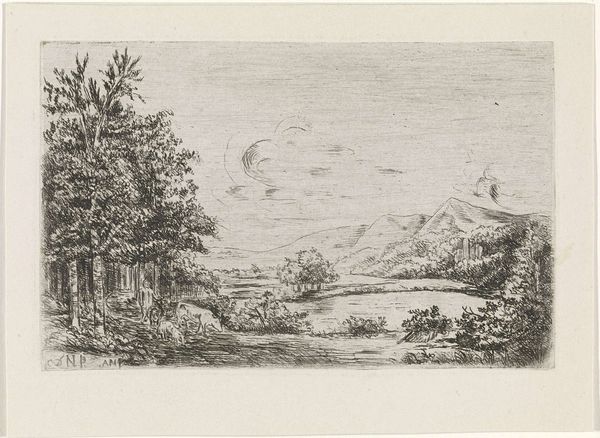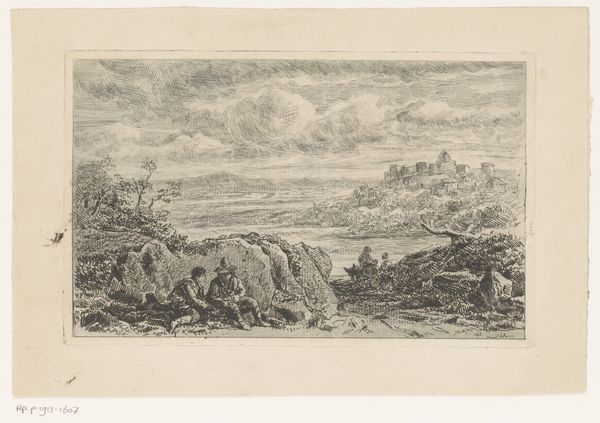
print, etching
# print
#
etching
#
landscape
#
mannerism
Dimensions: height 108 mm, width 194 mm
Copyright: Rijks Museum: Open Domain
Curator: Here we have Hercules Segers' etching, "The Enclosed Valley," created around 1625 to 1630. The print exemplifies Segers' innovative approach to landscape. Editor: There's something so compelling about this scene; almost melancholic with the muted tones, the looming rocky structures closing in on a distant town… like a hidden world. Curator: Indeed, Segers was a master of texture. Look at the density achieved through the etching; you can almost feel the grit and coarseness of the rock formations. Also, it's important to remember that Segers would often reprint his etched plates in different inks and even hand-color some impressions, treating each print almost as a unique artwork. Editor: I am so intrigued by the little town nestled within those mountains. There’s an overwhelming sense of both protection and confinement. It really evokes a hidden sanctuary, or perhaps a secret to be guarded. Segers seems to hint at the transience of earthly existence in this valley sheltered by mighty geological forms. Curator: It’s fascinating how Segers used relatively simple materials to achieve this feeling. His approach to printmaking involved various techniques, like manipulating the biting process or using different papers. He pushed the boundaries of etching as a reproducible medium. Editor: I suppose what I find most striking is the timeless symbolism here. Mountains, often emblems of endurance and obstacles, paired with that vulnerable valley settlement... it could represent humanity's quest for safety, or perhaps our desire for something beyond what's visible. Curator: Yes, and consider the era—the Dutch Golden Age. Here's an artist focused on invented, dramatic landscapes rather than portraits or genre scenes, reflecting a shift in artistic focus and consumer taste. The growing merchant class fueled a demand for new subjects beyond traditional religious or aristocratic patronage. Editor: What a compelling intersection of landscape and human psyche. Segers' etching makes me think about how landscapes can embody emotions and myths that resonate across generations. Curator: Agreed. Seeing "The Enclosed Valley" reminds us to value the radical explorations in material practices of earlier eras, particularly given our focus on technological advancements in modern art.
Comments
rijksmuseum about 2 years ago
⋮
The earliest impressions of this etching are on linen. By painting the foreground with brown paint and the background with grey or blue, Segers subsequently added a subtle colour perspective.
Join the conversation
Join millions of artists and users on Artera today and experience the ultimate creative platform.
